
Day 5, Sunday 8 March
As with yesterday. Our driver is waiting for us even as we start breakfast. Early starts are just not on the menu. However, that plain omelet is, but there are none of the usual sauces to spice it up. There is plenty of toast though and to be fair our hosts have been really friendly. Now it’s time to carry on where we left off yesterday in the old city of Anuradaphura. For this visit I am better prepared and have a site list but I still expect to be compromised if I don’t pay the $25 part fee.
Isurumuniya Temple…….. Isurumuniya is a Buddhist temple situated near to the Tissa Wewa (Tisa tank) in Anuradhapura, Sri Lanka. There are four carvings of special interest in this Vihara. They are the Isurumuniya, Lovers, Elephant Pond and The Royal Family source.
This is the place where Pulasthi Rishi lived and the place in which King Ravana was born. it has a written history of about 5000 years. The temple was built by King Devanampiya Tissa (307-267 BC) who ruled in the ancient Sri Lankan capital of Anuradhapura. After 500 children of high-caste were ordained, Isurumuniya was built for them to reside. King Kasyapa I (473-491 AD) again renovated this viharaya and named it as "Boupulvan, Kasubgiri Radmaha Vehera". This name is derived from the names of his 2 daughters and his name. There is a viharaya connected to a cave and above is a cliff with a small stupa built on it. It can be seen that the constructional work of this stupa belongs to the present period. Lower down on both sides of a cleft in a rock that appears to rise out of a pool, figures of elephants have been carved. On the rock is carved the figure of a horse. The carving of Isurumuniya lovers on the slab was brought from another place and placed here. A few yards away from this vihara is the Ranmasu Uyana.
Isurumuniya temple has an entry fee of 200 rupees and at that rate I would be happy if that were typical. The small museum at least gives me something to refer to considering it represents a culture nearly 2,000 years old.
Ruwanweli Maha Seya…….. Ruwanweli Maha Seya is another ancient stupa; in this case one of the oldest in the park (140 BC) and one of the 'Eight Great Places of Veneration'. It's just possible to park up for a couple of photos but any review of this secred site will have to wait until later.
Out of time…….. Unfortunately, I can’t do much more now without paying the park fee. We have covered the majority of important sites but realistically you could spend days at this site but such in depth coverage could never have been in the general plan. Our driver has done his best. All the parking areas are policed. It’s too late now to add more site visits much as I’d like to.
Dambulla…….. We now press on into Matale District. On the way we take a traditional lunch Sri Lankan style, a buffet type we’ve used before but here I learn something new. You can’t call it a set price buffet as while you can choose what you put on your plate, there are beady eyes keeping a tab and when I get the bill, I’m in for a nasty surprise. While it’s not expensive, the pieces of chicken and river fish with dal, sambal and vegetables is not what I would call value for money here. It also raises the point that surveillance is very much part of the culture here.
Sirigi Uyana (formerly Grand Regent Holiday Resort and Spa)…….. We decide to check-in our room now in early afternoon. This accommodation is part of the agency our price I paid for in Columbo. Fortunately the resort is a notch up from the last accommodation with a kettle and tea provided. One obvious issue though is its location almost in the middle of the forest. Nature is all around but we feel isolated and totally reliant on our driver. After a rest we’re on the move again.
Sigiriya Rock…….. source. While it wasn’t expected at this time, it seems we’re off to Sigiriya Rock. I’m now reminded of the time we were planning to travel to Sri Lanka and it was Katoon with her usual enthusiasm who first mentioned it to me. I soon checked it out. If I’d been guilty of not doing my homework before I arrived in Sri Lanka, then with Sigiriya Rock, no judge could find against me. This is not only a World Heritage site, it’s arguably the premier location that is synonymous with Sri Lanka. While I decided long ago that it wouldn’t be practical for me to attempt to climb the rock, I was not expecting to arrive in the area, take a few photos and head straight back. However, what was I expecting since this attraction cannot be fully appreciated if you don’t make it to the summit. While we both agree that this is not possible, we were hoping for more but I guess the driver is aware that approaching the rock we would have to pay a significant park fee as at Anuradhapura. As it is, we are now free to add more sites in this area before dark.
Sigiriya or Sinhagiri (Lion Rock) is an ancient rock fortress located in the northern Matale District near the town of Dambulla in the Central Province, Sri Lanka. The name refers to a site of historical and archaeological significance that is dominated by a massive column of rock nearly 200 metres (660 ft) high.
According to the ancient Sri Lankan chronicle the Culavamsa, this site was selected by King Kashyapa (477–495 AD) for his new capital. He built his palace on the top of this rock and decorated its sides with colourful frescoes. On a small plateau about halfway up the side of this rock he built a gateway in the form of an enormous lion. The name of this place is derived from this structure — Sīnhāgiri, the Lion Rock (an etymology similar to Sinhapura, the Sanskrit name of Singapore, the Lion City).
The capital and the royal palace was abandoned after the king's death. It was used as a Buddhist monastery until the 14th century. Sigiriya today is a UNESCO listed World Heritage Site. It is one of the best preserved examples of ancient urban planning.
Refreshed…….. As we leave the Sigiriya Fortress I record an elephant bathing in the Elahera Canal under the watchful eye of his mahout while a little further on is Pabbatharama Dagaba, another stupa in ruin.
Kandalama…….. Kandalama is a located within Central Province near Dambulla. It’s home for one of Sri Lanka's first five star hotels, Heritance Kandalama and Kaludiya Pokuna Archeological Forest. This is on account of its magnificent location beside the Kandalama Reservoir where wild elephants can be seen bathing. We skirt around the reservoir to the north taking us to Dambulla. There’s enough time to stop for photos.
Golden Temple…….. source. Arriving at the Golden Temple itself in Dambulla, I find there is no fee except for the museum of wall paintings which is 200 rupees. However, the temple also includes the cave which contains important paintings. Here there is a fee to enter of 1,500 rupees but it's no longer open this late in the day.
Dambulla cave temple also known as the Golden Temple of Dambulla is a World Heritage Site (1991), situated in the central part of the Sri Lanka. This site is situated 148 kilometres (92 mi) east of Colombo, 72 kilometres (45 mi) north of Kandy and 43 km (27 mi) north of Matale.
Dambulla is the largest and best-preserved cave temple complex in Sri Lanka. The rock towers 160 m over the surrounding plains. There are more than 80 documented caves in the surrounding area. Major attractions are spread over five caves, which contain statues and paintings. These paintings and statues are related to Gautama Buddha and his life. There are a total of 153 Buddha statues, three statues of Sri Lankan kings and four statues of gods and goddesses. The latter include Vishnu and the Ganesha. The murals cover an area of 2,100 square metres (23,000 sq ft). Depictions on the walls of the caves include the temptation by the demon Mara, and Buddha's first sermon.
Prehistoric Sri Lankans would have lived in these cave complexes before the arrival of Buddhism in Sri Lanka as there are burial sites with human skeletons about 2,700 years old in this area, at Ibbankatuwa near the Dambulla cave complexes.
Tourist Destination…….. Returning through the town of Dambulla, I’m surprised how touristy it is compared with Anuradhapura. The proximity of the Sigiriya Rock is the main reason but that doesn’t seem to totally explain the vibrant tourist infrastructure. Picking up only snacks, we skip dinner and head back to the room for a quiet night. Next Page.
As with yesterday. Our driver is waiting for us even as we start breakfast. Early starts are just not on the menu. However, that plain omelet is, but there are none of the usual sauces to spice it up. There is plenty of toast though and to be fair our hosts have been really friendly. Now it’s time to carry on where we left off yesterday in the old city of Anuradaphura. For this visit I am better prepared and have a site list but I still expect to be compromised if I don’t pay the $25 part fee.
Isurumuniya Temple…….. Isurumuniya is a Buddhist temple situated near to the Tissa Wewa (Tisa tank) in Anuradhapura, Sri Lanka. There are four carvings of special interest in this Vihara. They are the Isurumuniya, Lovers, Elephant Pond and The Royal Family source.
This is the place where Pulasthi Rishi lived and the place in which King Ravana was born. it has a written history of about 5000 years. The temple was built by King Devanampiya Tissa (307-267 BC) who ruled in the ancient Sri Lankan capital of Anuradhapura. After 500 children of high-caste were ordained, Isurumuniya was built for them to reside. King Kasyapa I (473-491 AD) again renovated this viharaya and named it as "Boupulvan, Kasubgiri Radmaha Vehera". This name is derived from the names of his 2 daughters and his name. There is a viharaya connected to a cave and above is a cliff with a small stupa built on it. It can be seen that the constructional work of this stupa belongs to the present period. Lower down on both sides of a cleft in a rock that appears to rise out of a pool, figures of elephants have been carved. On the rock is carved the figure of a horse. The carving of Isurumuniya lovers on the slab was brought from another place and placed here. A few yards away from this vihara is the Ranmasu Uyana.
Isurumuniya temple has an entry fee of 200 rupees and at that rate I would be happy if that were typical. The small museum at least gives me something to refer to considering it represents a culture nearly 2,000 years old.
Ruwanweli Maha Seya…….. Ruwanweli Maha Seya is another ancient stupa; in this case one of the oldest in the park (140 BC) and one of the 'Eight Great Places of Veneration'. It's just possible to park up for a couple of photos but any review of this secred site will have to wait until later.
Out of time…….. Unfortunately, I can’t do much more now without paying the park fee. We have covered the majority of important sites but realistically you could spend days at this site but such in depth coverage could never have been in the general plan. Our driver has done his best. All the parking areas are policed. It’s too late now to add more site visits much as I’d like to.
Dambulla…….. We now press on into Matale District. On the way we take a traditional lunch Sri Lankan style, a buffet type we’ve used before but here I learn something new. You can’t call it a set price buffet as while you can choose what you put on your plate, there are beady eyes keeping a tab and when I get the bill, I’m in for a nasty surprise. While it’s not expensive, the pieces of chicken and river fish with dal, sambal and vegetables is not what I would call value for money here. It also raises the point that surveillance is very much part of the culture here.
Sirigi Uyana (formerly Grand Regent Holiday Resort and Spa)…….. We decide to check-in our room now in early afternoon. This accommodation is part of the agency our price I paid for in Columbo. Fortunately the resort is a notch up from the last accommodation with a kettle and tea provided. One obvious issue though is its location almost in the middle of the forest. Nature is all around but we feel isolated and totally reliant on our driver. After a rest we’re on the move again.
Sigiriya Rock…….. source. While it wasn’t expected at this time, it seems we’re off to Sigiriya Rock. I’m now reminded of the time we were planning to travel to Sri Lanka and it was Katoon with her usual enthusiasm who first mentioned it to me. I soon checked it out. If I’d been guilty of not doing my homework before I arrived in Sri Lanka, then with Sigiriya Rock, no judge could find against me. This is not only a World Heritage site, it’s arguably the premier location that is synonymous with Sri Lanka. While I decided long ago that it wouldn’t be practical for me to attempt to climb the rock, I was not expecting to arrive in the area, take a few photos and head straight back. However, what was I expecting since this attraction cannot be fully appreciated if you don’t make it to the summit. While we both agree that this is not possible, we were hoping for more but I guess the driver is aware that approaching the rock we would have to pay a significant park fee as at Anuradhapura. As it is, we are now free to add more sites in this area before dark.
Sigiriya or Sinhagiri (Lion Rock) is an ancient rock fortress located in the northern Matale District near the town of Dambulla in the Central Province, Sri Lanka. The name refers to a site of historical and archaeological significance that is dominated by a massive column of rock nearly 200 metres (660 ft) high.
According to the ancient Sri Lankan chronicle the Culavamsa, this site was selected by King Kashyapa (477–495 AD) for his new capital. He built his palace on the top of this rock and decorated its sides with colourful frescoes. On a small plateau about halfway up the side of this rock he built a gateway in the form of an enormous lion. The name of this place is derived from this structure — Sīnhāgiri, the Lion Rock (an etymology similar to Sinhapura, the Sanskrit name of Singapore, the Lion City).
The capital and the royal palace was abandoned after the king's death. It was used as a Buddhist monastery until the 14th century. Sigiriya today is a UNESCO listed World Heritage Site. It is one of the best preserved examples of ancient urban planning.
Refreshed…….. As we leave the Sigiriya Fortress I record an elephant bathing in the Elahera Canal under the watchful eye of his mahout while a little further on is Pabbatharama Dagaba, another stupa in ruin.
Kandalama…….. Kandalama is a located within Central Province near Dambulla. It’s home for one of Sri Lanka's first five star hotels, Heritance Kandalama and Kaludiya Pokuna Archeological Forest. This is on account of its magnificent location beside the Kandalama Reservoir where wild elephants can be seen bathing. We skirt around the reservoir to the north taking us to Dambulla. There’s enough time to stop for photos.
Golden Temple…….. source. Arriving at the Golden Temple itself in Dambulla, I find there is no fee except for the museum of wall paintings which is 200 rupees. However, the temple also includes the cave which contains important paintings. Here there is a fee to enter of 1,500 rupees but it's no longer open this late in the day.
Dambulla cave temple also known as the Golden Temple of Dambulla is a World Heritage Site (1991), situated in the central part of the Sri Lanka. This site is situated 148 kilometres (92 mi) east of Colombo, 72 kilometres (45 mi) north of Kandy and 43 km (27 mi) north of Matale.
Dambulla is the largest and best-preserved cave temple complex in Sri Lanka. The rock towers 160 m over the surrounding plains. There are more than 80 documented caves in the surrounding area. Major attractions are spread over five caves, which contain statues and paintings. These paintings and statues are related to Gautama Buddha and his life. There are a total of 153 Buddha statues, three statues of Sri Lankan kings and four statues of gods and goddesses. The latter include Vishnu and the Ganesha. The murals cover an area of 2,100 square metres (23,000 sq ft). Depictions on the walls of the caves include the temptation by the demon Mara, and Buddha's first sermon.
Prehistoric Sri Lankans would have lived in these cave complexes before the arrival of Buddhism in Sri Lanka as there are burial sites with human skeletons about 2,700 years old in this area, at Ibbankatuwa near the Dambulla cave complexes.
Tourist Destination…….. Returning through the town of Dambulla, I’m surprised how touristy it is compared with Anuradhapura. The proximity of the Sigiriya Rock is the main reason but that doesn’t seem to totally explain the vibrant tourist infrastructure. Picking up only snacks, we skip dinner and head back to the room for a quiet night. Next Page.
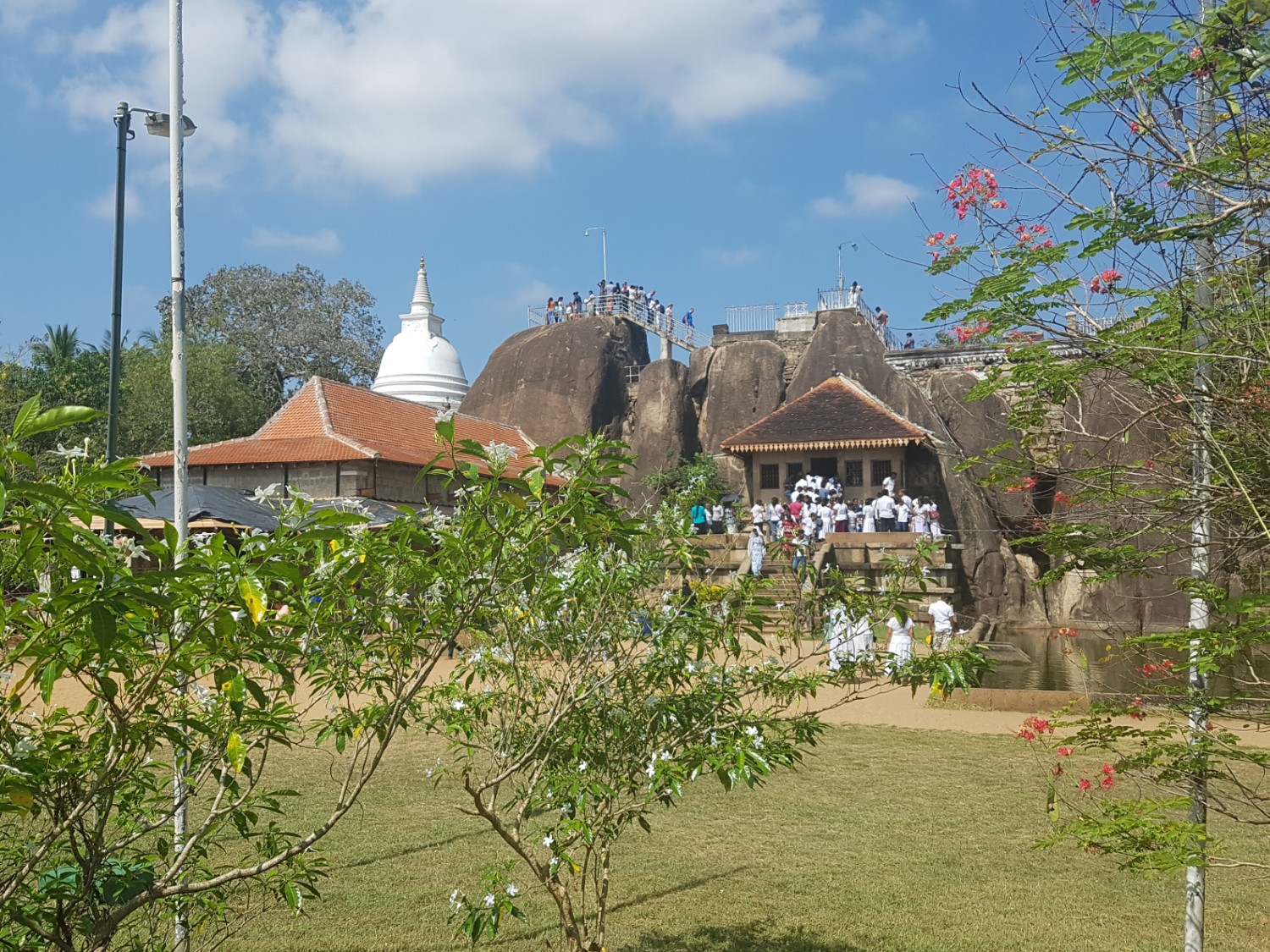
Isurumuniya Temple,
Anuradhapura Historical Park
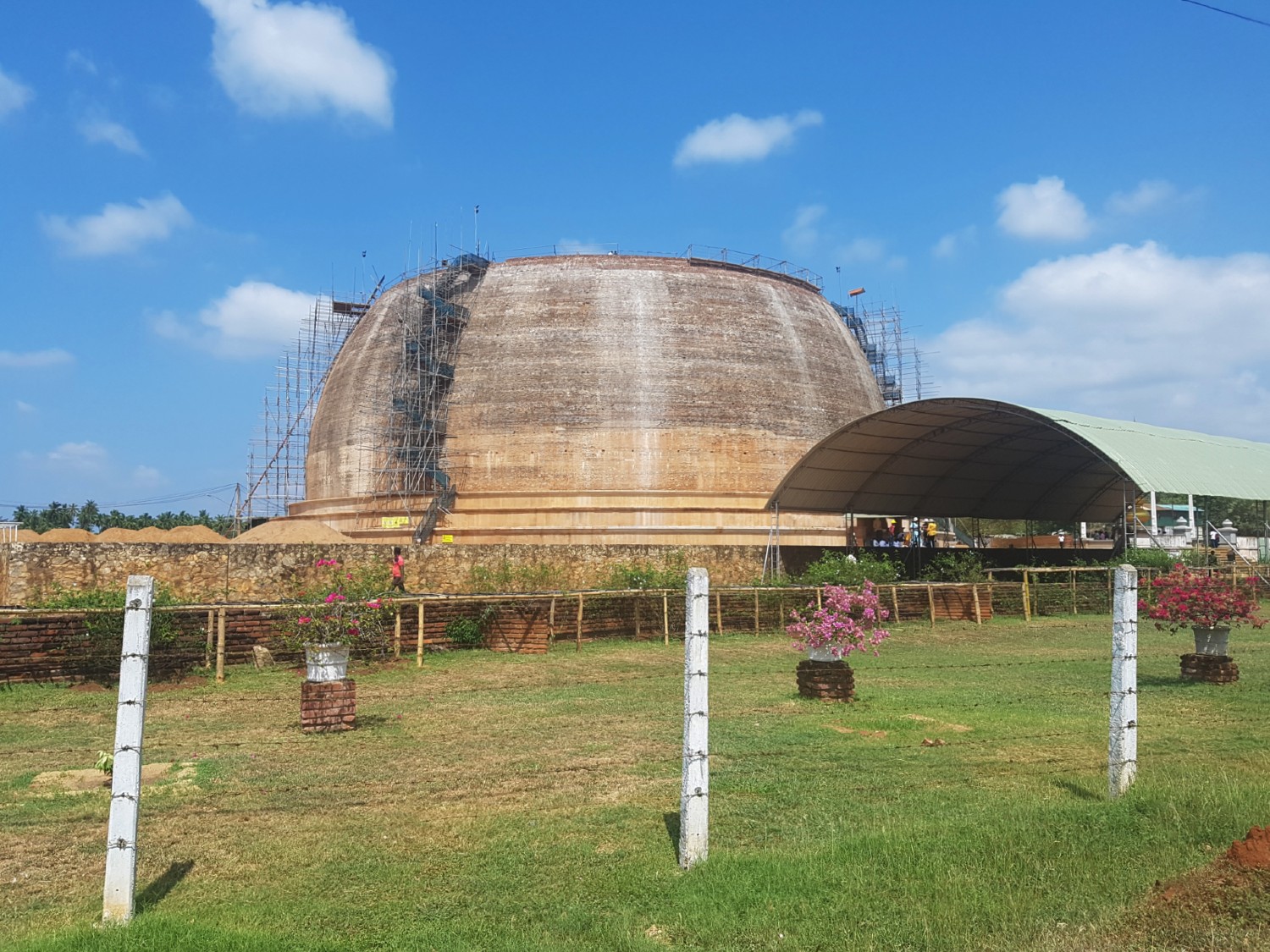
Sandahiru Seya,
Anuradhapura Historical Park
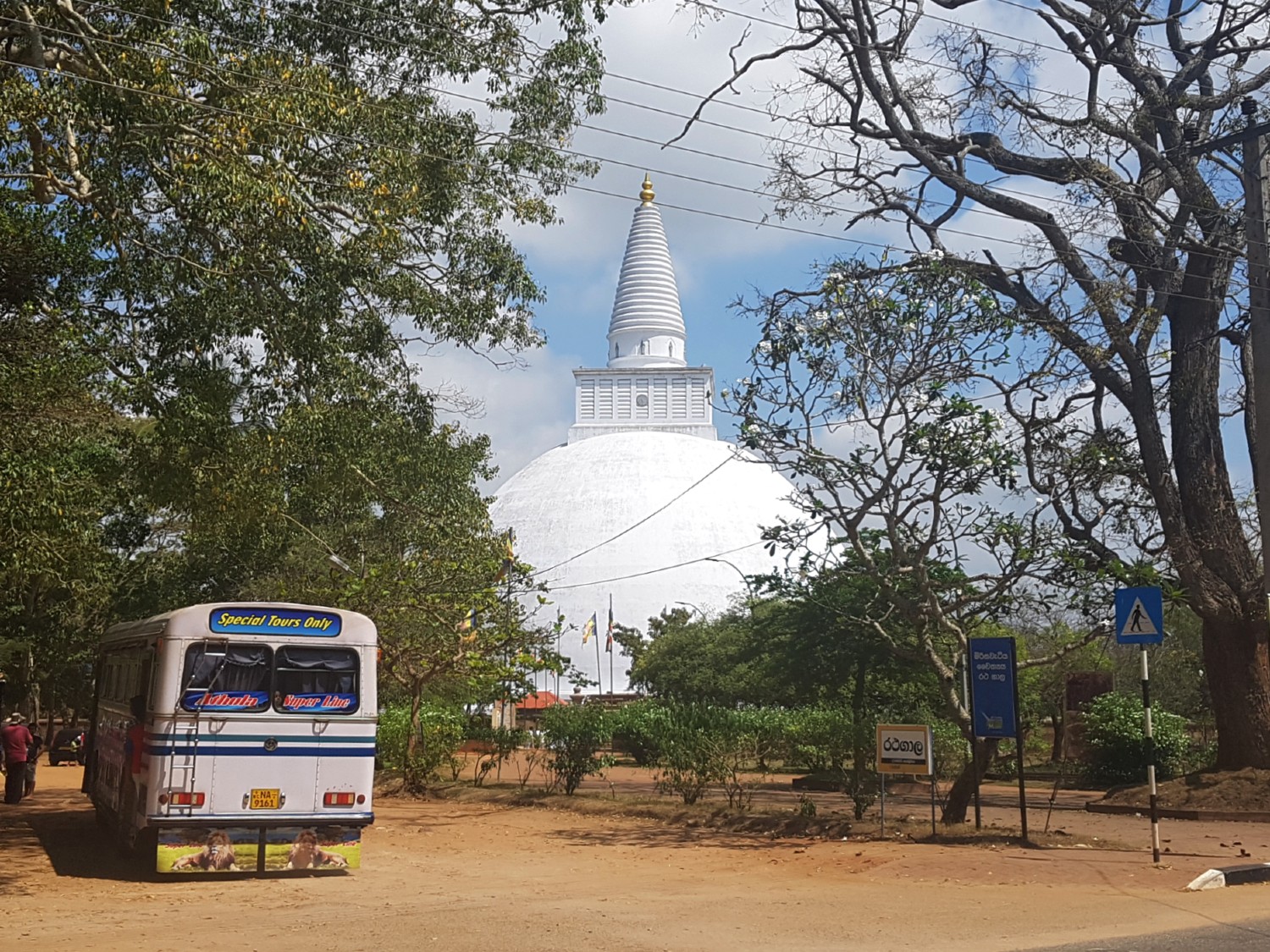
Ruwanweli Maha Seya,
Anuradhapura Historical Park
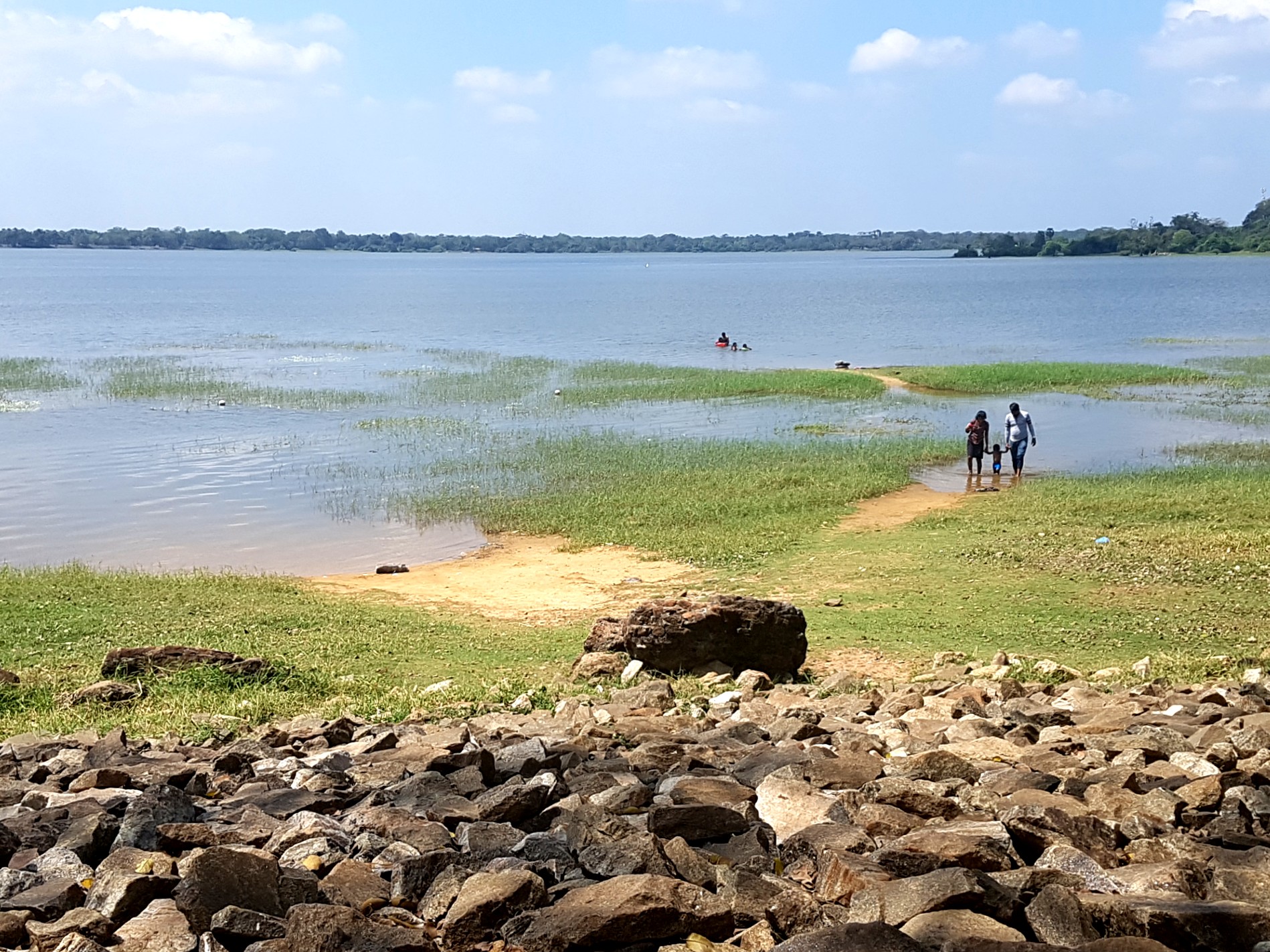
Basawkkulama Tank, Anuradhapura
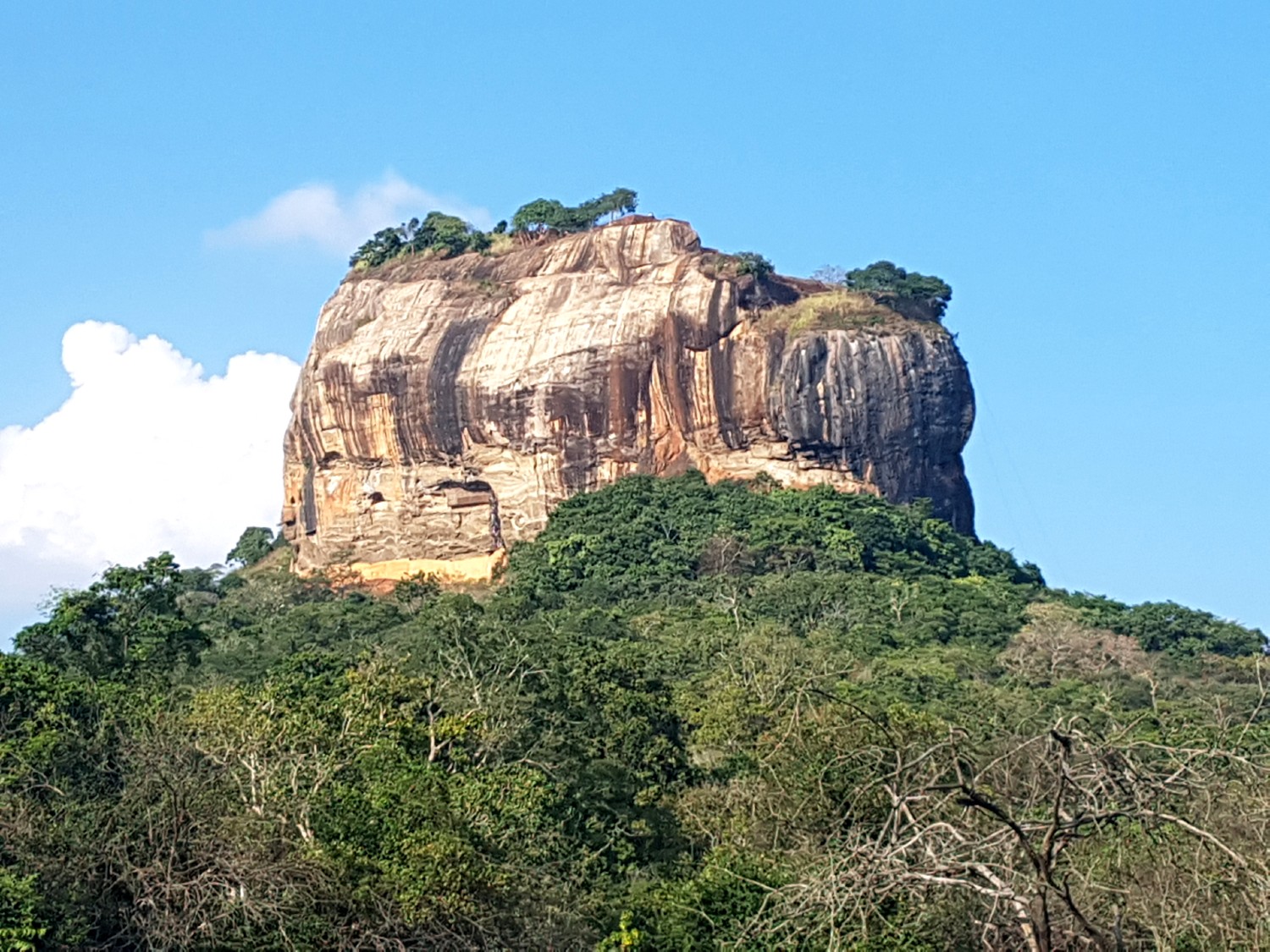
Sigiriya Fortress, Sigiriya
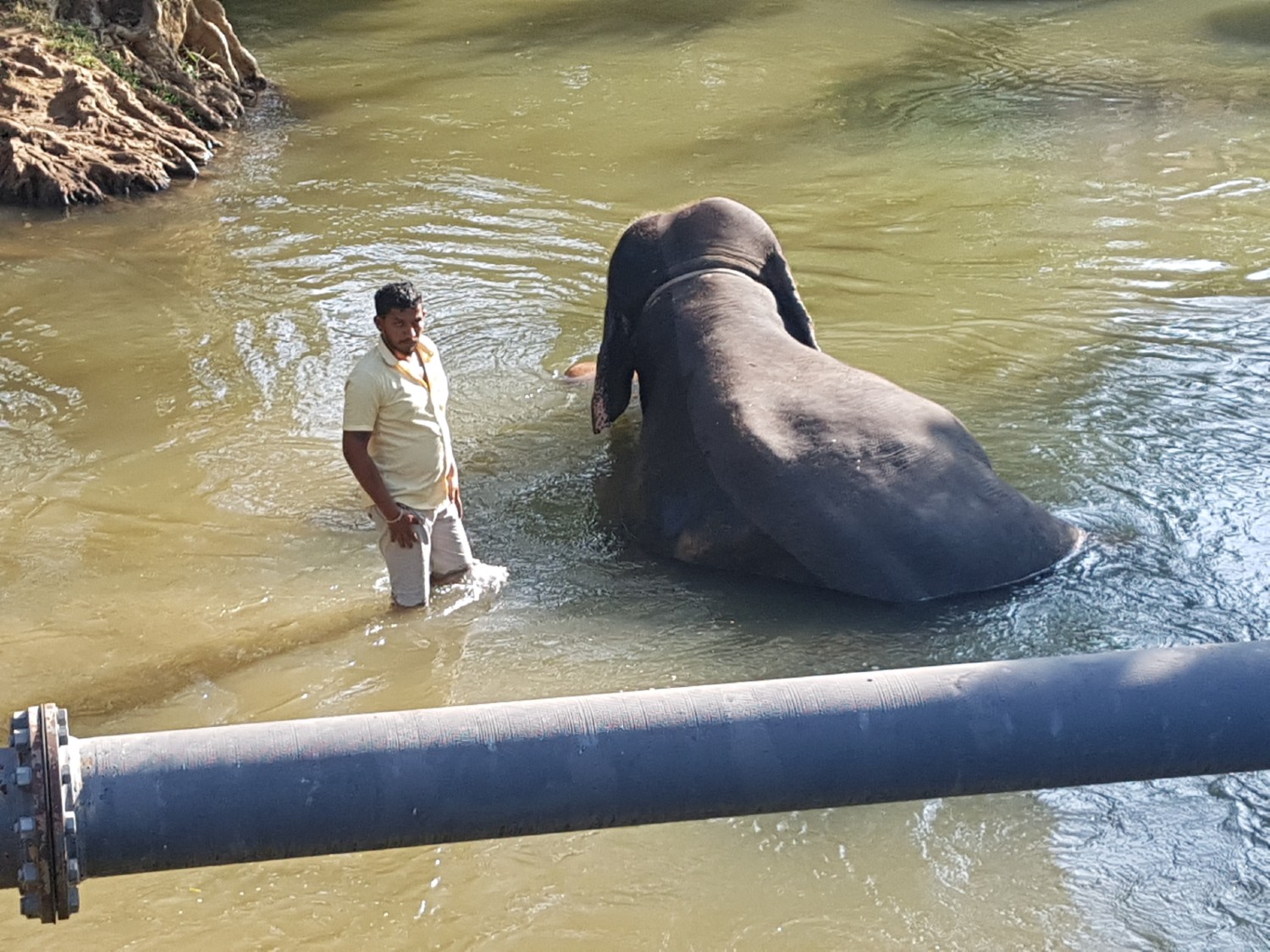
An Elephant bathes in the Elahera Canal near the Sigiriya Fortress
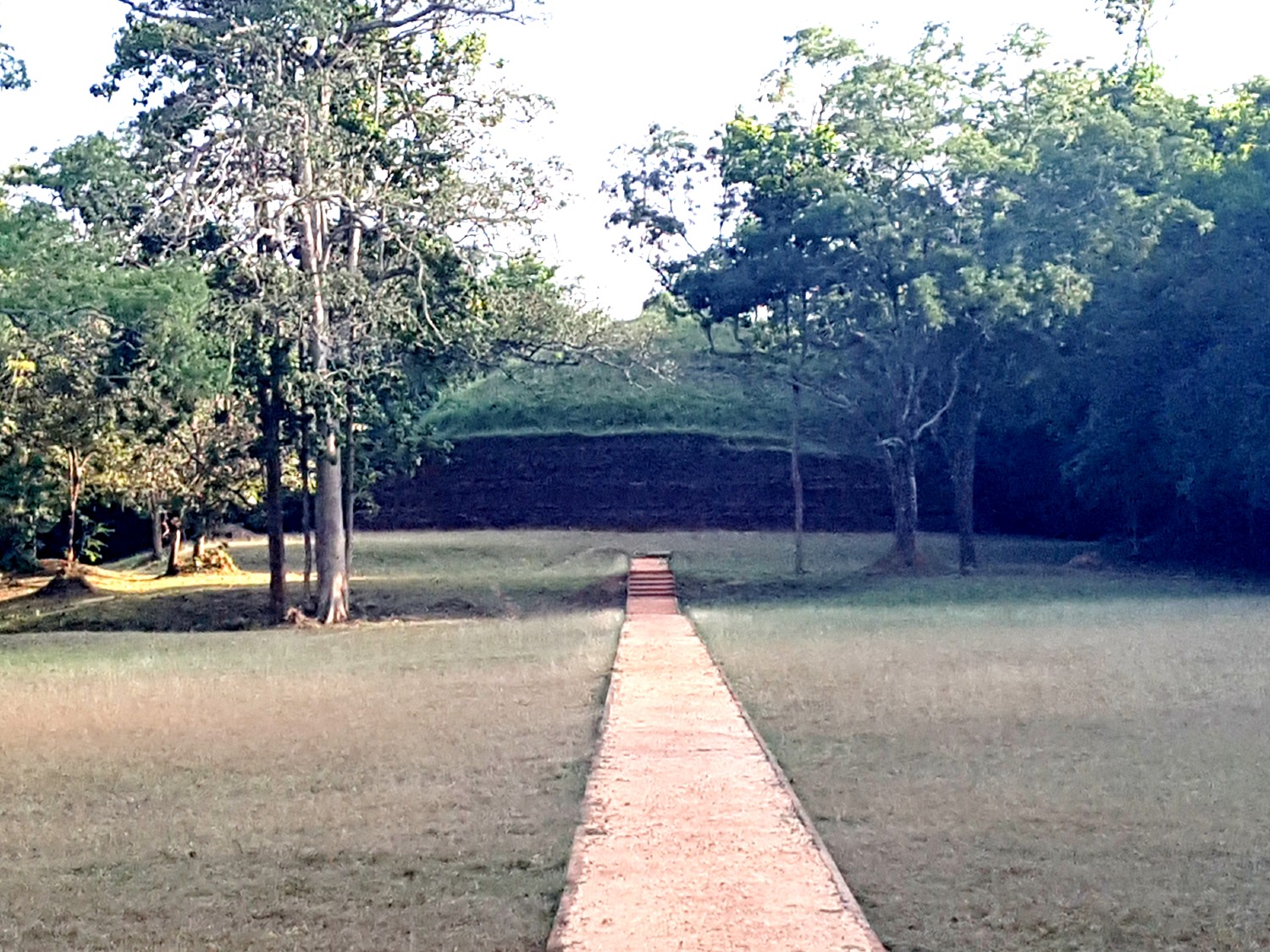
Pabbatharama Dagaba near the
Sigiriya Fortress
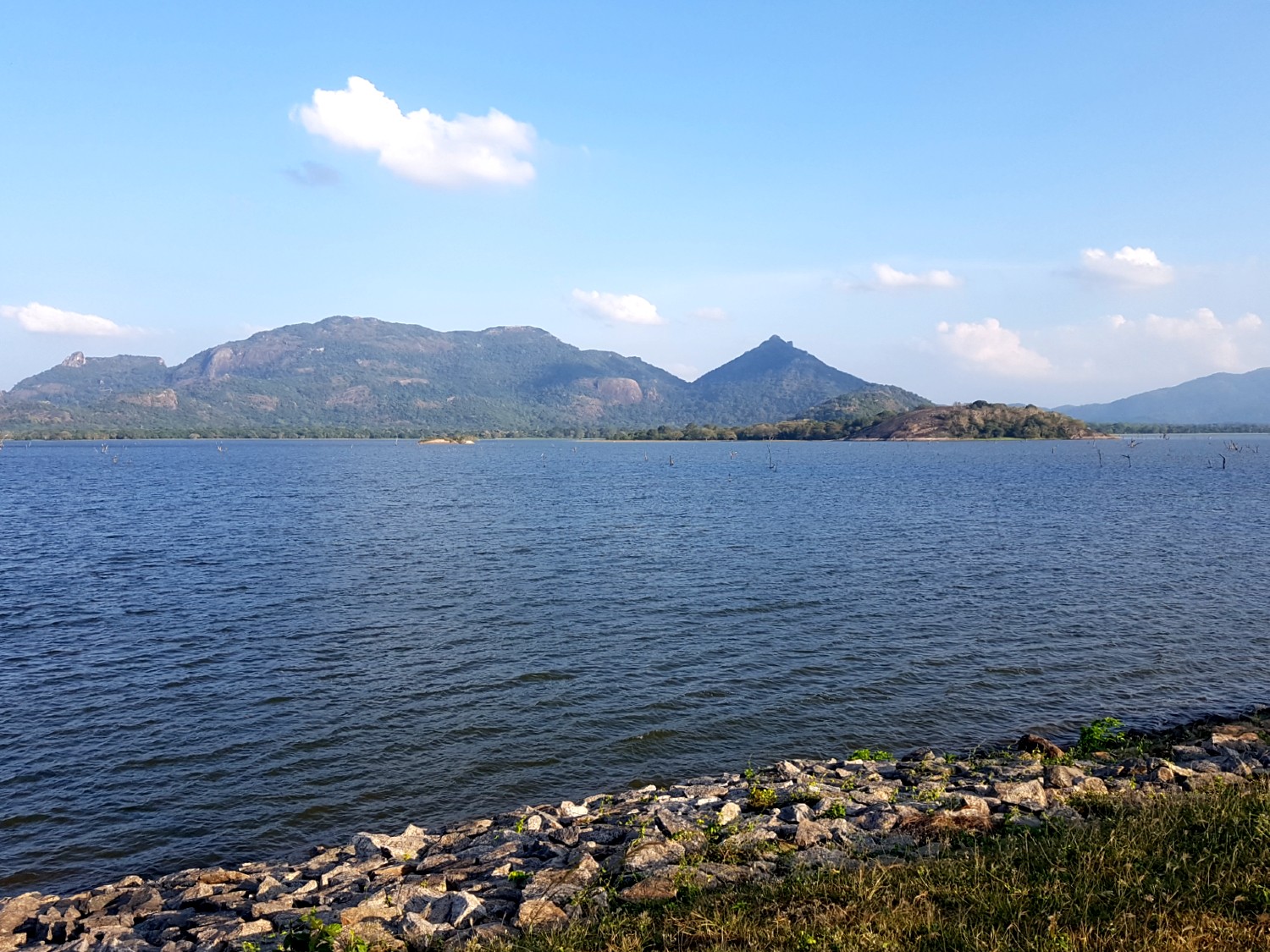
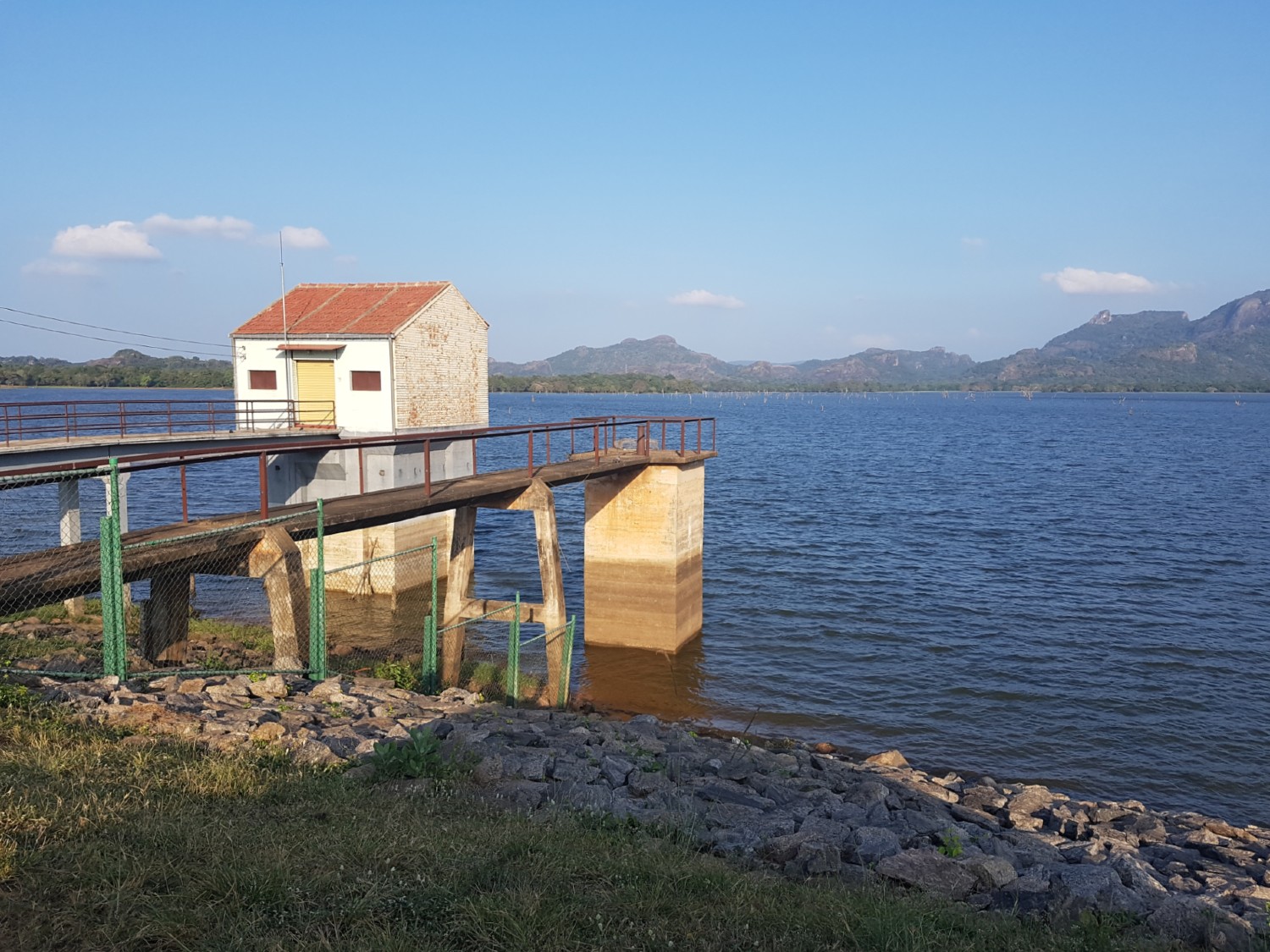
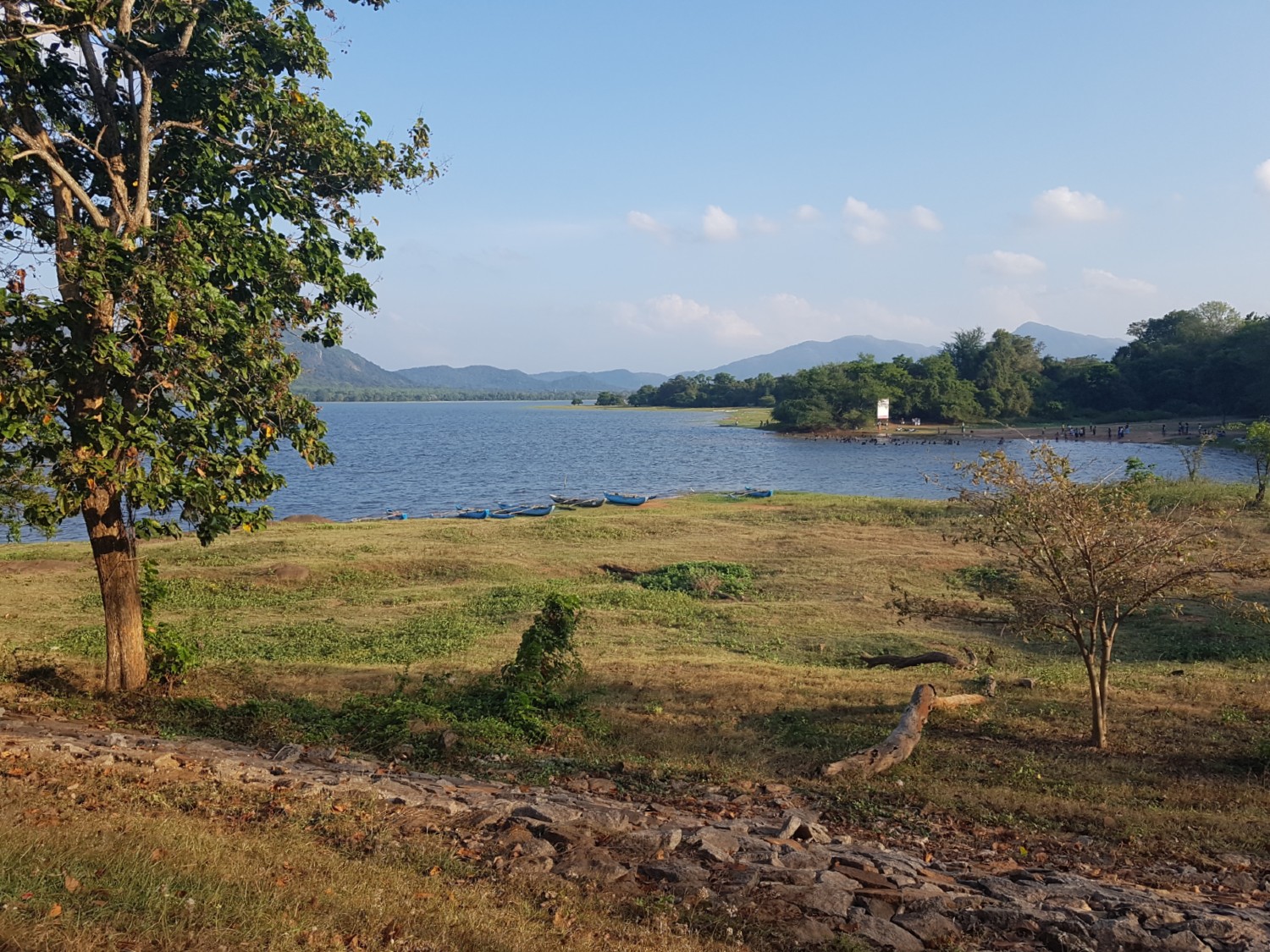
Kandalama Reservoir near Dambulla
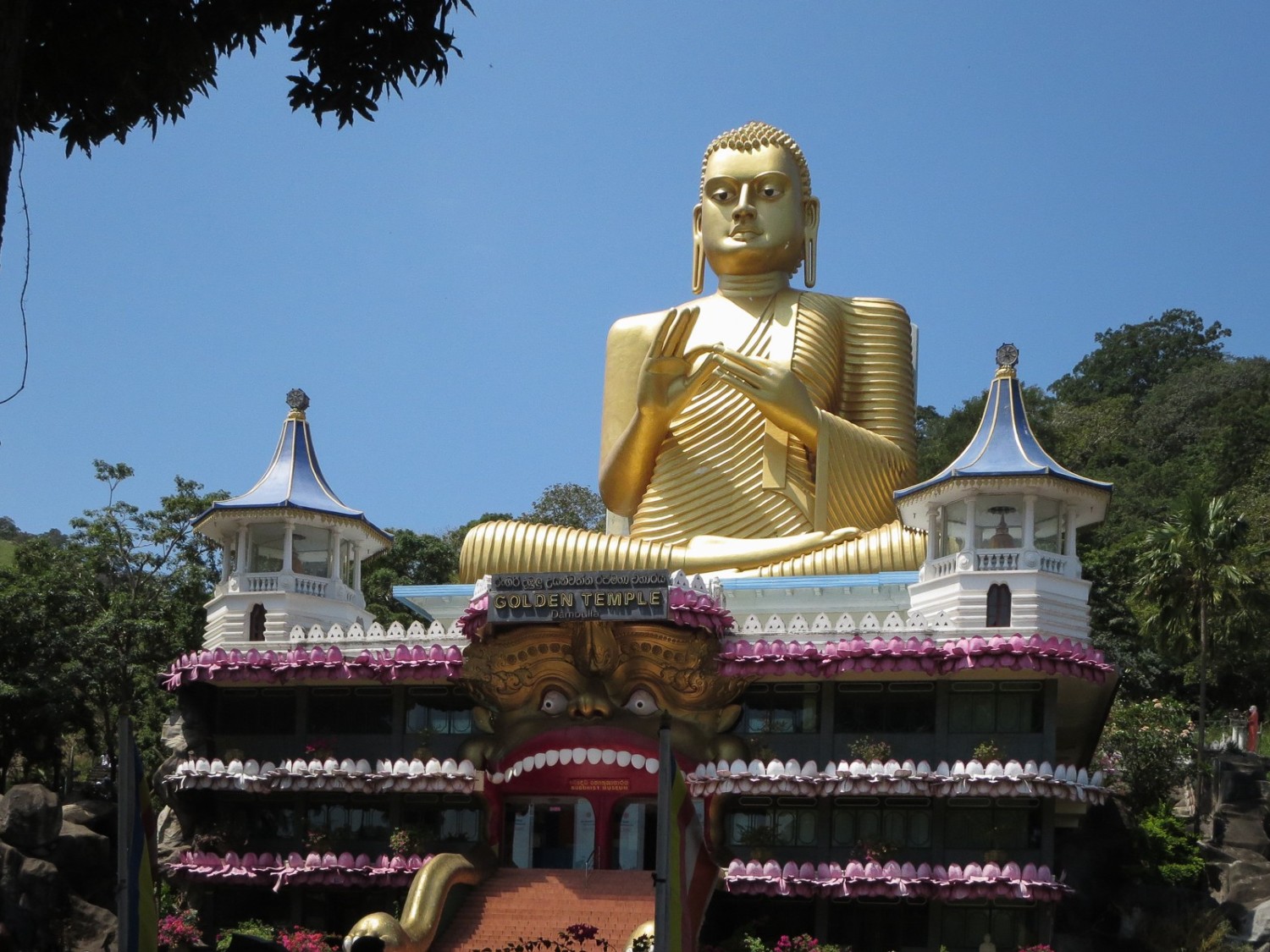
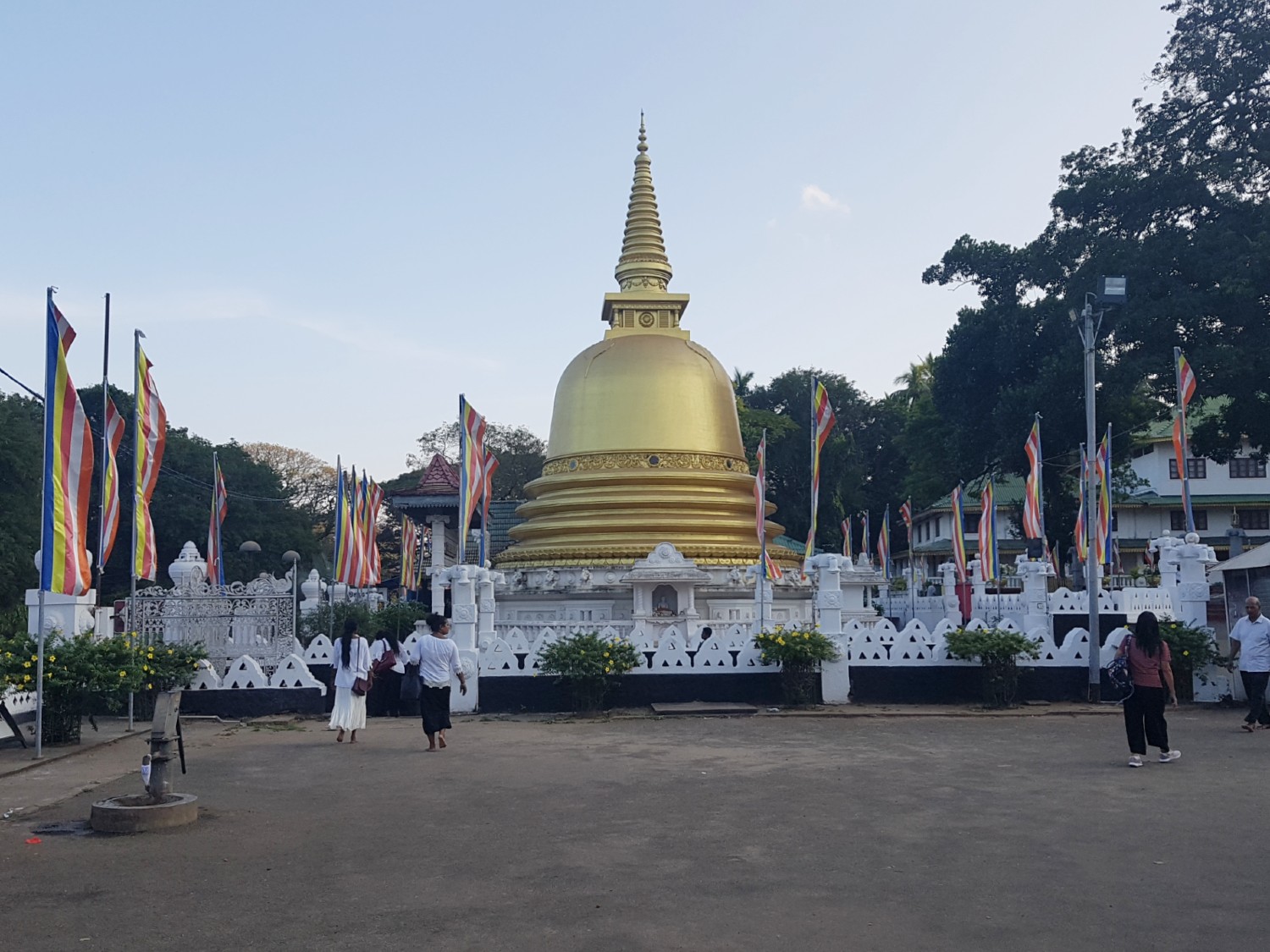
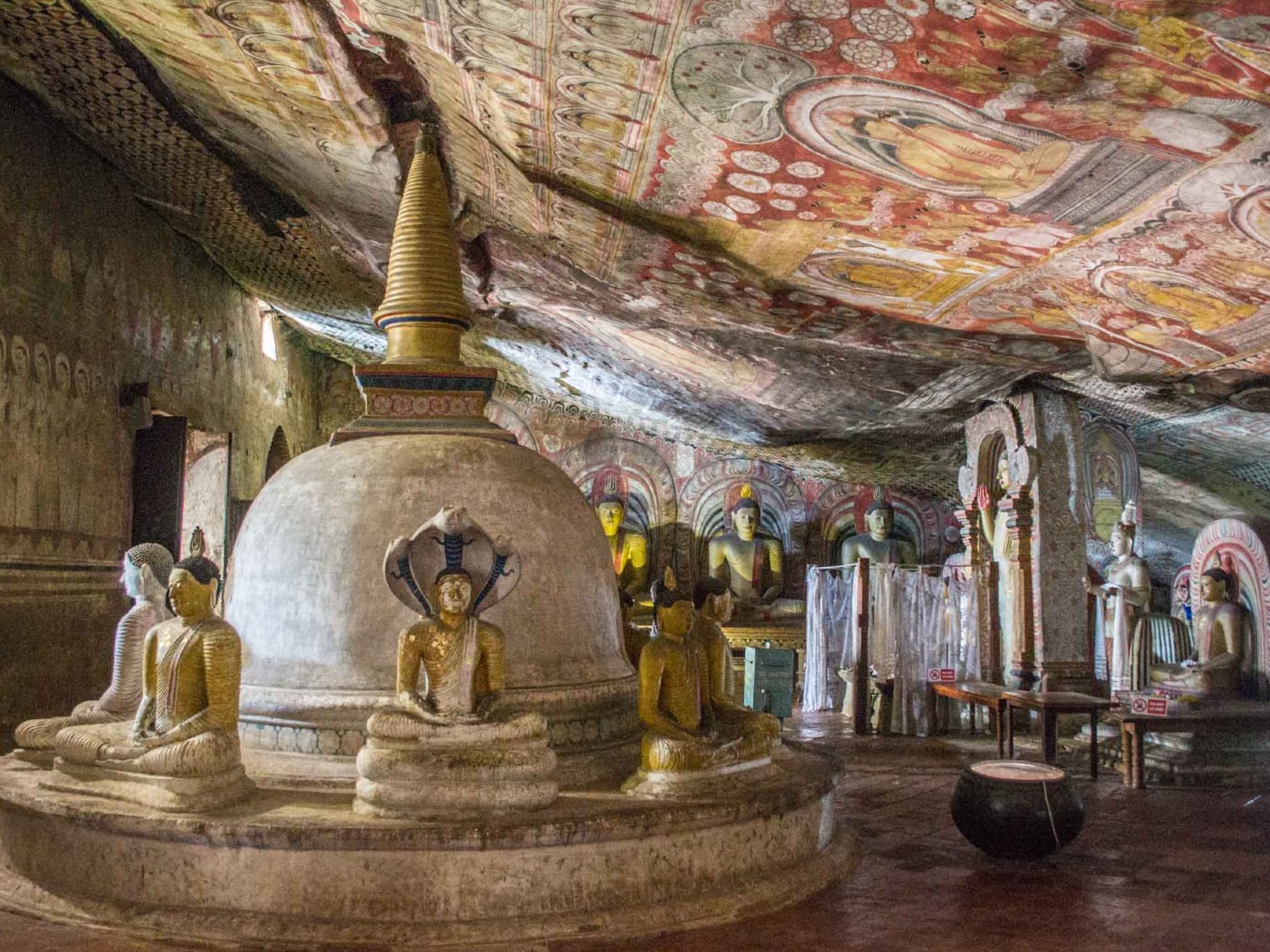
Golden Temple, Dambulla